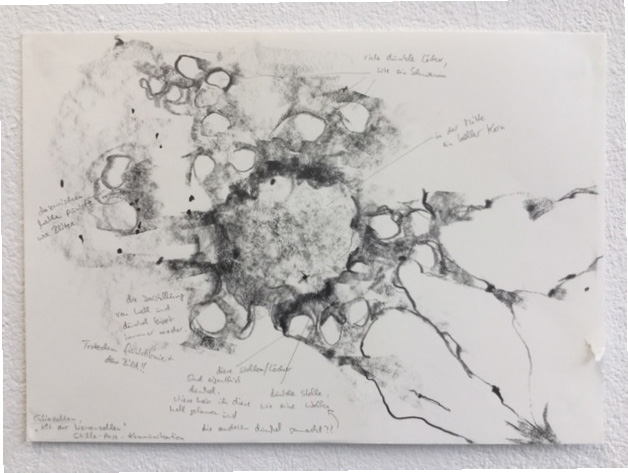
Tanja-Kristine Böhme, Another thinking, 2020 (drawing)
Does octopus thinking look anything like? Neurobiologists might point to the construction of the nervous system, and especially the network of neurons, the system’s powerhouse cells that trigger and coordinate actions of an organism. to illustrate and exemplify the systems’ organization and functioning, they create schematic drawings that trace and represent the individual cells and their connections, through which the neurons exchange electrical impulses and chemical compounds to signal each other.
Such schematics highlight the chemo-biological, physiological integration and re-actions that accompany an octopus’ actions. It is difficult to derive from them an impression of a mental experience and consciousness an octopus might have of her activities, herself and the world. And even less do these representations allow us to develop an awareness — to understand — what it might feel like to be an octopus. Especially when we consider the wildly different organization and structure of the octopus nervous system to our own.
Three fifth of an octopus’ neurons are located in her eight arms. While this often draws the claim that octopuses have nine brains, scientists are quick to respond that this comparison doesn’t really stack up. It is neither clear, for example, whether and, if so, to what extend the arms are controlled by the neurons in an octopus’s central brain or act autonomously instead.
Yet drawing, as tanja-Kristine Böhme reminds us, is not just a practice of representation but also of exploration and cognitive inquiry. Instead of capturing a preformed image, we can let our mind follow the line as our hand (or a computer) draws it on a sheet (or screen), developing an image and understanding of something as it appears on the surface before us. How far might exploring the nervous system and neuronal cell-structure of octopuses via the practice of drawing then allow us to inhabit octopus-consciousness?